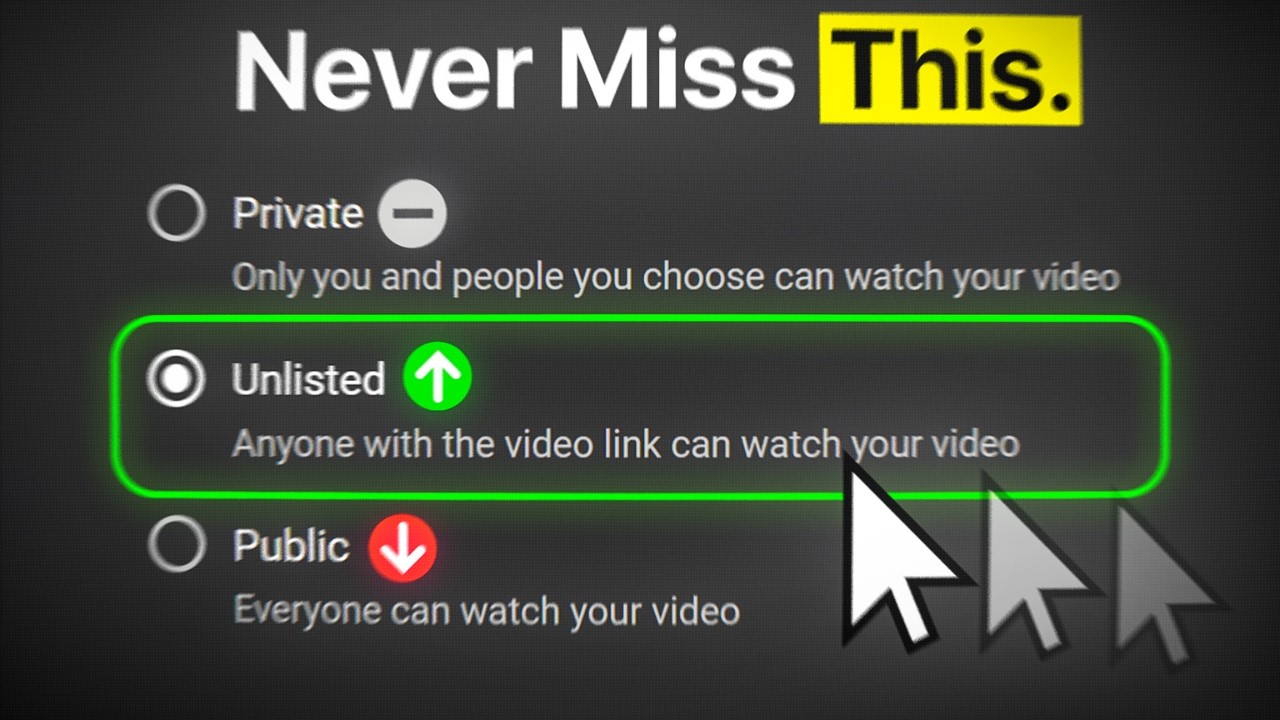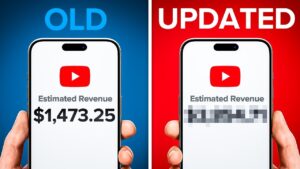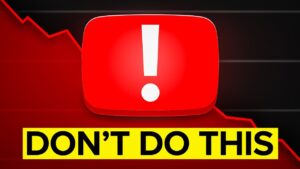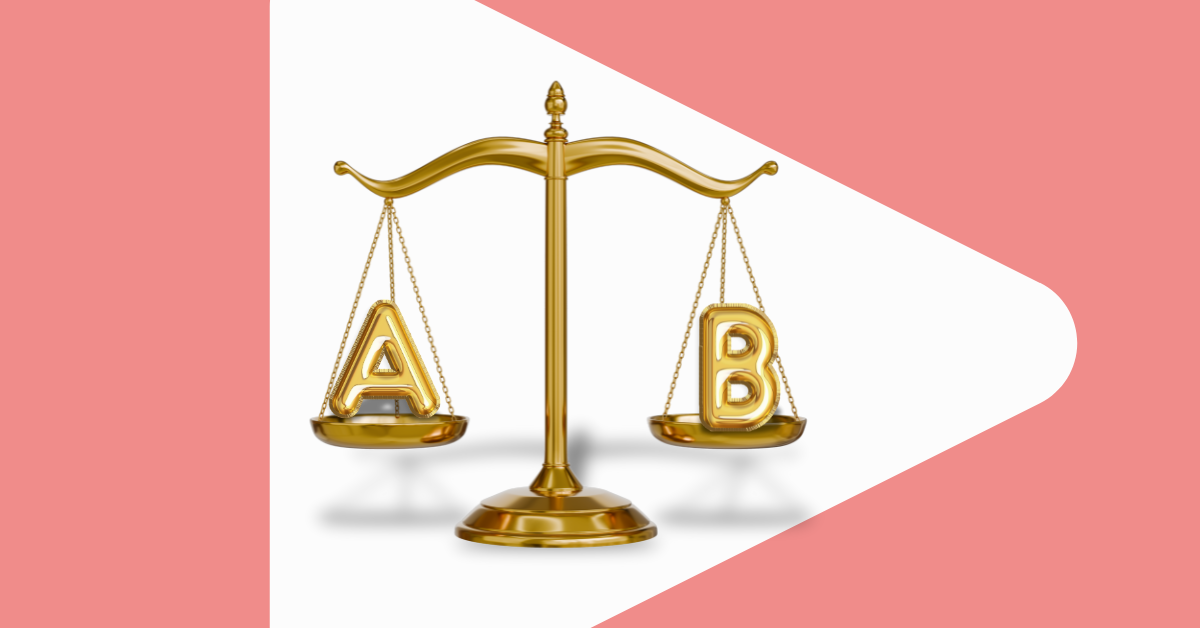When Mr Beast said he would finally shut up, it was big news.
The most famous of all content creators ran a test and determined that thumbnails where his mouth was closed, got more watch time than those where his mouth was open. You could practically hear the mouths of YouTube creators around the world snap shut all at once because where Mr Beast leads, many YouTube creators follow.
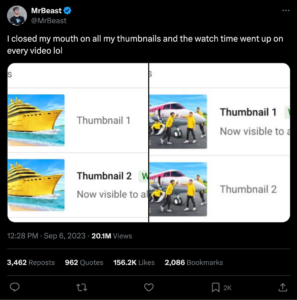
Mr Beast has been very vocal about testing and following the data. At the time, this was just the latest example. We like this example because it seems so silly but precisely because Mr Beast and team have tested, experimented, and learned along the way, they’re in a position to test things that seem a bit silly.
You’re not Mr Beast (and if you are, hi Jimmy, how are things?) so your A/B tests will likely start out a bit more practical. So let’s get into it.
YouTube A/B Testing Tools
To start A/B testing on YouTube, you’ll need a YouTube A/B testing tool.
YouTube introduced its own A/B testing tool called Test and Compare Thumbnails. Test and Compare Thumbnails lets creators test two or three thumbnails and picks a winner based on YouTube’s favorite metric bar none, watch time.
TubeBuddy has offered YouTube A/B testing tools for creators since very nearly its inception. TubeBuddy YouTube A/B Testing lets you to test thumbnails as well as titles, descriptions and other elements In addition, TubeBuddy A/B Testing lets you click-through rate (CTR), watch time, and other parameters where YouTube Test and Compare only tests on watch time.
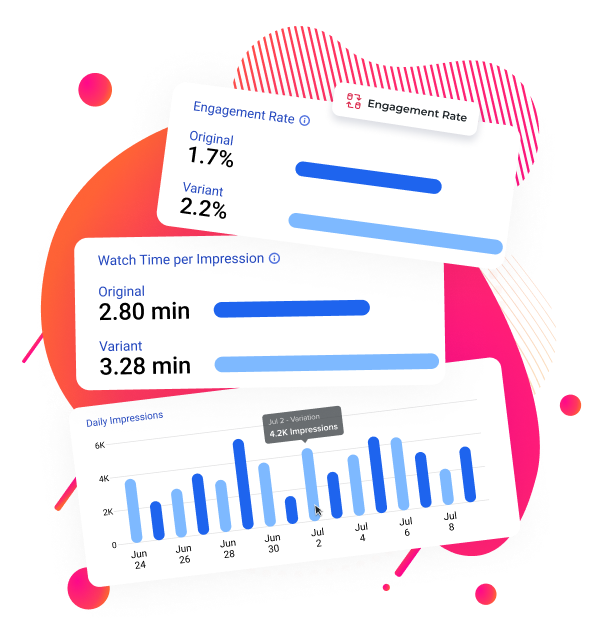
We’ll take a look at how these YouTube A/B testing tools compare against each other along the way but first, let’s talk about A/B testing strategies for YouTube.
Why A/B Testing is Critical for YouTube Success
Every time you publish a video, you’re making dozens of decisions that can impact performance. Will a face in the thumbnail outperform a text-heavy design? Does including the word “ultimate” in your title drive more clicks than a word like “complete?” Should your description lead with a hook or a keyword-rich summary?
Without testing, these decisions are based on assumption. With A/B testing, they’re based on data. An ancillary benefit of A/B testing is that the more you test, the more accurate your assumptions will become.
Strategic Approaches to YouTube A/B Testing
Successful A/B testing, on YouTube or anywhere else, starts with a clear hypothesis. For example: “Using emoji in my YouTube thumbnail (or title, or description) will drive more viewers to click through to watch my video.” We then run a test to prove or disprove the hypothesis.
A good hypothesis is important because you should only test one variation at a time: if you’re running a YouTube thumbnail A/B test and you change the text, the image, the colors, etc. between your A and B variations, it will be impossible to tell which change impacted the results.
In other words:
- Test one hypothesis
- See the results of your test
- Incorporate the learnings into your YouTube strategy
- Rinse and repeat

Here are some strategic tests that can reveal valuable insights about your audience:
Thumbnail Strategy Testing
Whether you use YouTube Test and Compare Thumbnails or TubeBuddy’s YouTube A/B Testing, here are a few thumbnail variation ideas you can test:
- Emoji 🚀 vs. no emoji 🫥
- Text vs. no text
- Close-up faces vs. wide shots
- Bright colors vs. muted tones
- Action shots vs. static images
- With branding vs. without branding
Title Optimization Tests
If you use TubeBuddy YouTube A/B Testing, you can also test title variations. Here are a few elements you can test in your titles:
- Plain text vs. adding emoji 🔥🤯
- Question-based vs. statement titles
- Including numbers vs. not
- Emotional words vs. neutral language
- Long vs. short titles
- Keyword placement (beginning vs. end)
Description Tests
With TubeBuddy YouTube A/B Testing, you can also test variations in the video description:
- Short vs. detailed introductions
- Short vs. long chapters
- Descriptive vs. simple chapter titles
- Links near the top vs. at the bottom
What You Learn From A/B Testing
Properly structured A/B tests reveal insights far beyond simple winner/loser data. As mentioned previously, the key is to incorporate learnings into your overall YouTube strategy. With consistent YouTube A/B testing, you can begin to understand:
- Which thumbnail styles resonate with different audience segments
- How your subscriber base differs from non-subscribers in content preferences
- What types of titles drive higher watch time
- Which description formats encourage more engagement
- How different traffic sources respond to various content elements
YouTube Test & Compare
YouTube’s native testing tool, Test & Compare, offers creators a starting point for optimization. However, it comes with significant limitations:
- Only allows thumbnail testing
- Measures success solely through watch time
- Provides basic metrics
- Limited testing duration options
YouTube Test and Compare vs. TubeBuddy A/B Testing
The fact that YouTube now includes basic A/B testing in YouTube Studio tells you everything you need to know about how important A/B testing is. Test and Compare Thumbnails is a welcome inclusion and has the distinct advantage of being free, included in YouTube Studio. Allowing creators to test three variations at a time is also a selling point.

That said, because it only allows for thumbnail testing, only measures against watch time, and only provides basic metrics, creators will quickly outgrow its limitations.
TubeBuddy YouTube A/B Testing goes beyond basic thumbnail comparisons, offering creators and agencies more flexibility in what they test and how they test.
TubeBuddy A/B tools can run watch time tests but can also test for click-through rate (CTR), engagement rate, views, or even a custom metric. In addition, TubeBuddy offers more flexibility in testing duration, deeper analytics on the results of testing, and can test behavior of subscribers vs. non-subscribers, or even for viewers coming from a specific source, for example an email newsletter, from a blog post, or from another social platform.
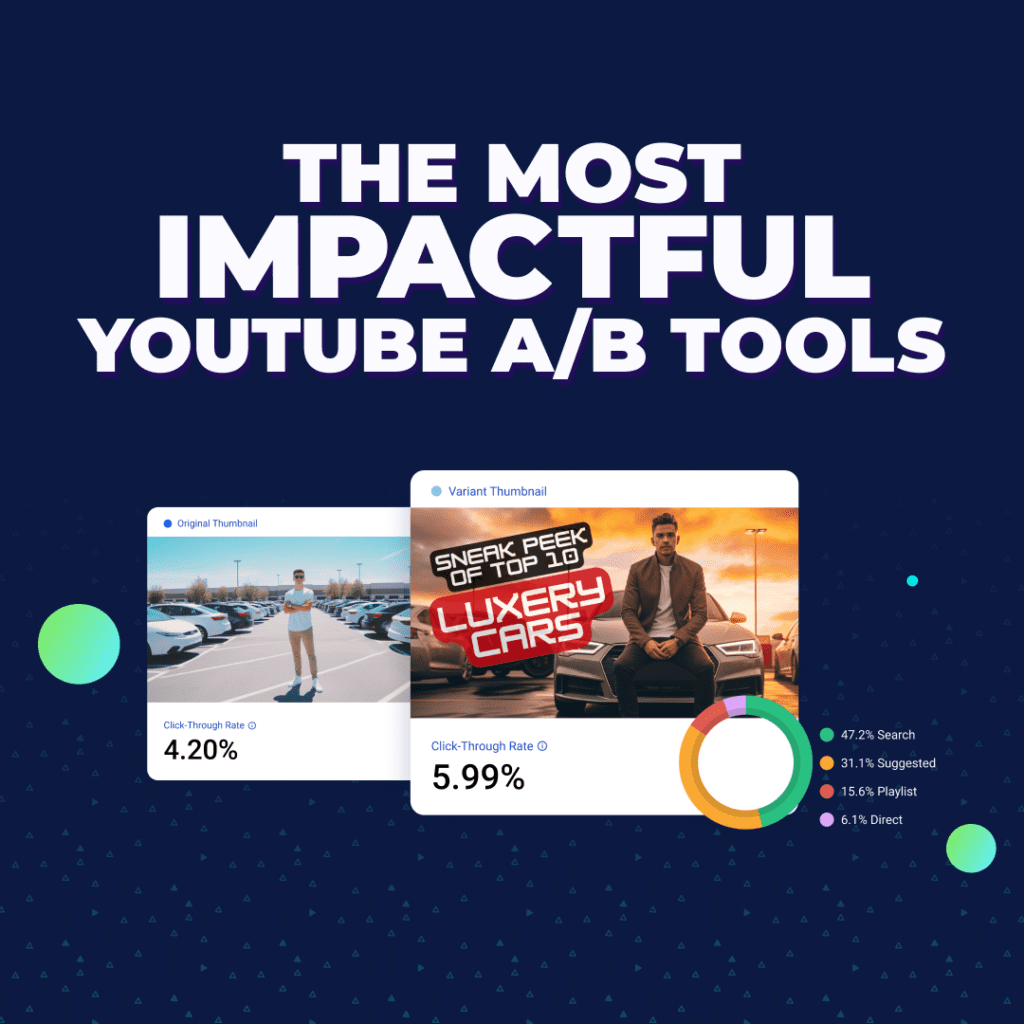
The Takeaway: If You’re Not A/B Testing, You Should Be
Whichever YouTube A/B testing tool you use, the benefits of meaningful A/B testing are huge. Coming up with a hypothesis to A/B test is a valuable strategic exercise in itself. Even if you just take away simple insights—closed mouth thumbnails perform better than open mouth thumbnails for example—you’re learning.
By getting specific in your testing though, testing against not just watch time but CTR and engagement, and by digging into the data from your tests, you stand to learn even more, and you build the knowledge that lets you make better assumptions.
And that, really, is the key to succeeding on YouTube: Try stuff. Learn. Repeat.
Get an unfair advantage on YouTube
Give your YouTube channel the upper hand and easily optimize for more views, more subs, and more of every metric that matters.

